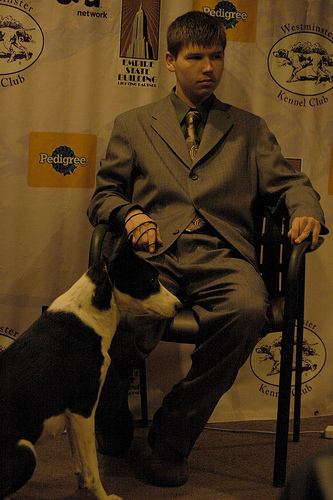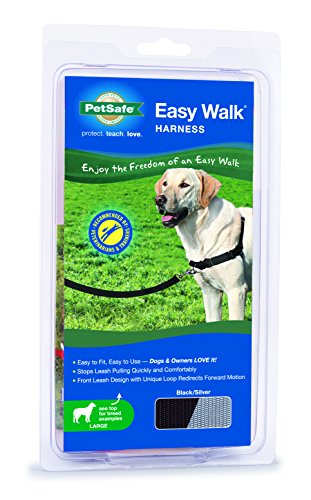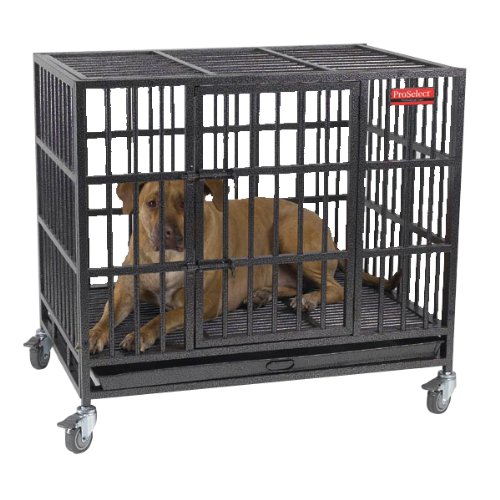Doggy First Aid
Accidents and emergencies can happen anytime, so it's best to always be prepared. An ounce of prevention on your part can save your pet's life. Knowing what to do in case of an emergency and acting quickly can reduce the chances of your dog sustaining any additional injuries.
First Aid Kits
All dog owners should know canine first aid and have a canine first aid kit. You can make your own or buy a pre-packaged kit online. If you're going to do it yourself, be sure to include the following items: scissors, vet wrap, gauze pads and rolls, alcohol prep pads, eyewash solution, latex gloves, instant cold packs, nail clippers, tweezers, and a triple antibiotic ointment such as Neosporin. You can also add surgical rubber tubing and a four-inch piece of dowel wood, which make an excellent tourniquet.
Important Information
On an index card, write down the contact numbers and office hours of your regular vet, emergency clinic, and poison control center. Tape this information on the inside lid of your canine first aid kit. Have additional copies around the house so other people can easily find them if necessary – one good spot is the refrigerator door. Also save the information on your cell phone so you have it with you when you're away or on the road.
Transportation
If you have a large dog, figure out beforehand how you're going to move him. Big breeds can weigh 90 to 150 pounds, which isn't easy to carry. With another person helping you, place a folded blanket under your dog and lift the corners of the blanket to safely move him to your vehicle.
Shock
Shock is a result of a traumatic injury. Symptoms include rapid heart rate and breathing, muscle weakness, pale tongue and gums, low pulse rate, cool extremities, and shivering. A dog that's in shock is in imminent danger and can die if not treated on time.
If your pet is in shock, consider using a muzzle to restrain him. Even the most loving pet can bite if he is in pain. An improvised muzzle can be made from a piece of rope, gauze strip, necktie, or pantyhose. In severe situations, a blanket can be placed over the dog until a muzzle can be put on.
To treat shock, control any bleeding first. This is not the time to be cleaning out wounds, however. Keep your dog warm, quiet and still, and bring him to the nearest emergency veterinary hospital immediately.
Bleeding
Profuse bleeding must be given attention first and foremost, regardless of other injuries that may be present. Control the bleeding by applying pressure firmly with a bandage, cloth, or your own hand if necessary. Try not to remove the bandage to check the wound as it may start bleeding again.
If pressure does not reduce the rate of bleeding, a tourniquet may be needed. The tourniquet should be placed about three inches above the wound with just enough pressure to stop the bleeding. Do not over tighten. Loosen the tourniquet every ten to fifteen minutes and reapply until the bleeding can be controlled with a pressure bandage.
Poison
A sudden illness in a previously healthy dog can indicate poisoning. Symptoms include weakness, trembling, drooling, vomiting, foaming at the mouth, and loss of bladder and bowel control. Two of the most common sources of poisoning in canines are rat poison and antifreeze.
If you suspect that your dog has been poisoned, act quickly and appropriately. The longer the poison remains in your pet's system, the more harmful it will be. Only induce vomiting if you're certain your dog hasn't ingested a corrosive substance. Call your vet or emergency vet – if you know what type of poison has been ingested, it will be much easier for them to help you. If possible, bring the package the substance came in as it will often assist them in determining the proper course of action.

 My Dog Jumps Up On People
My Dog Jumps Up On People
 The Evolution of Dogs: 5 critical steps in the evolution of the modern dog
The Evolution of Dogs: 5 critical steps in the evolution of the modern dog
 Junior Handler Shows Canaan Dog with Seizure Alert Skill - Westminster 2010
Junior Handler Shows Canaan Dog with Seizure Alert Skill - Westminster 2010
 How To Stop Dogs Pulling On The Leash
How To Stop Dogs Pulling On The Leash
 Sarcoptic Mange and Mange in Dogs and other Canine Diseases Humans Can Get
Sarcoptic Mange and Mange in Dogs and other Canine Diseases Humans Can Get
 President Dogs: The 20 Most Recent Presidential Pooches (& Other Pets)
President Dogs: The 20 Most Recent Presidential Pooches (& Other Pets)
 How to have a Well Behaved Dog and Save Money at the Same Time
My partner was fixated on getting a pet dog, and cost w
How to have a Well Behaved Dog and Save Money at the Same Time
My partner was fixated on getting a pet dog, and cost w
 Pet Health Insurance
Nunya Undergoing Radiation Therapy (Not Inexpensive!)
Pet Health Insurance
Nunya Undergoing Radiation Therapy (Not Inexpensive!)
 Pro Select Empire Cages
Crate training a dog is a go
Pro Select Empire Cages
Crate training a dog is a go
 Fashion For Dogs: Trends and Styles for the Chic Pooch
Is your pooch chic? Then youll need to keep up with the
Fashion For Dogs: Trends and Styles for the Chic Pooch
Is your pooch chic? Then youll need to keep up with the
 What Is My Dog Really Thinking?
Scientific Proof The proof i
What Is My Dog Really Thinking?
Scientific Proof The proof i